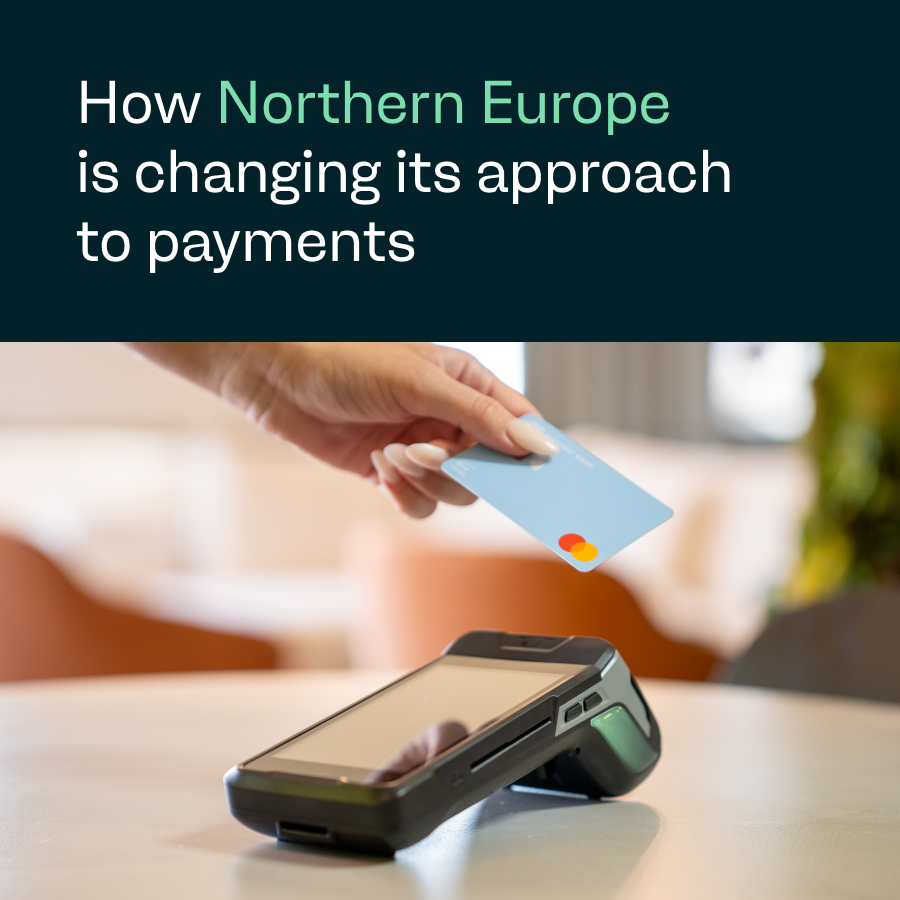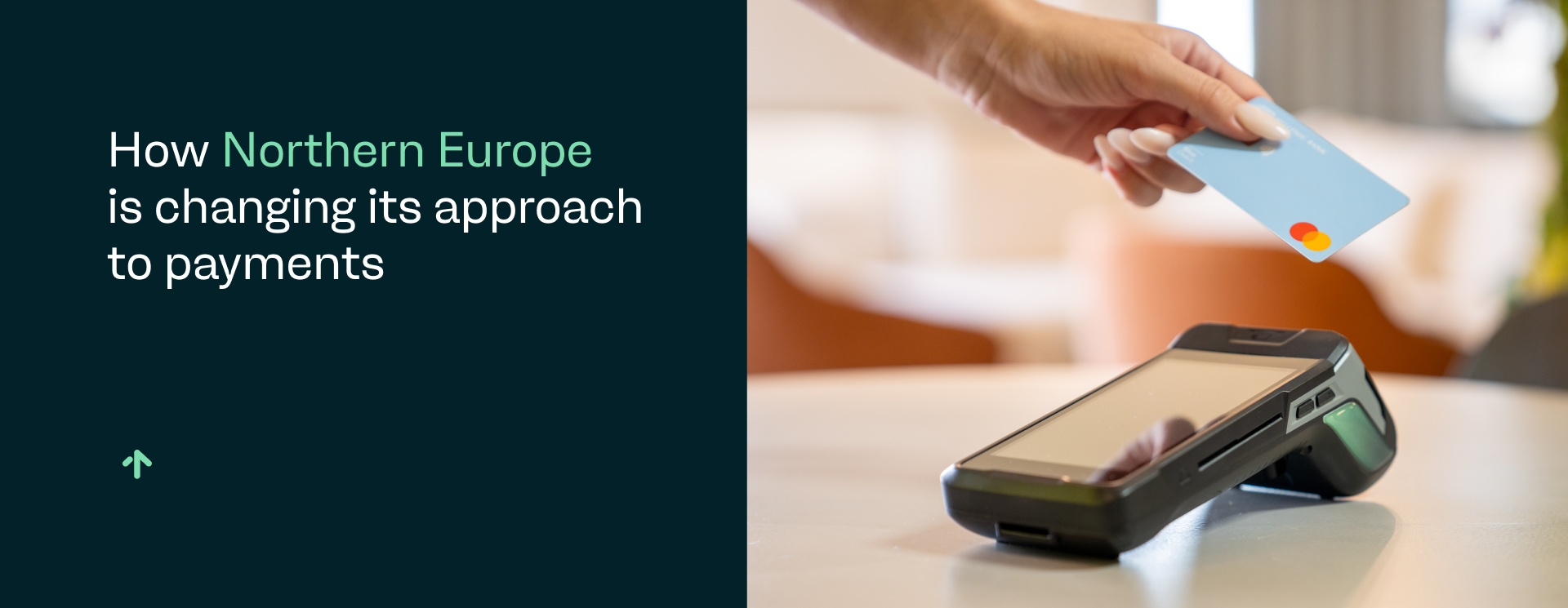
When it comes to the ongoing evolution and adoption of payment technologies across Europe, the Nordics certainly find themselves at the front of the pack. Our new paper, How Europe likes to pay, explores the trends and payment preferences of consumers all across Europe. Here, we're focusing on Northern Europe.
McKinsey states that Northern Europe leads the way in fintech performance, with Sweden being one of the most notable countries outperforming others in all critical areas.
Meanwhile, the Nordic Payment Report 2024 reveals that the region is moving toward a cashless reality, with mobile wallets and cards growing steadily in use and popularity. The report further showcases that, despite economic challenges over recent years, the Nordics remain focused on innovation in fintech.
As technologies like Open Banking and seamless payments cement their roles in the Nordic culture, merchants need to consider how the consumer payment preferences in the region are shifting as well.
Nordic payment trends show a balance of innovation and regulation
Northern Europe is taking steady strides away from a cash-based economy.
By the end of 2023, the total transaction value of the digital payment market was estimated at $164.5 billion, with expert predictions projecting it to reach $228.3 billion by 2028.
As reliance on cash diminishes, a shift to instant payments grows.
Sweden, in particular, is considered a leader in instant payments, encouraging other nations in the region to pick up the pace of adoption. In Denmark and Norway, for example, instant payments now account for roughly 50% of all account-to-account (A2A) transactions, outpacing Sweden by around 10%.
Regulators have also shifted their mindsets to be more favorable to instant payments, with the European Council and European Parliament agreeing to legislation that imposes an obligation on banks to offer regular A2A payments and instant payments at the same price point.
Despite the movement away from cash, however, some Northern European countries like Norway and Denmark still mandate the acceptance of cash payments, signifying regulators’ goal to maintain balance.
How do consumer preferences for alternative payment methods compare?
The digital-forward culture of the Nordics greatly impacts not just businesses but consumers, particularly with how they want to spend and make payments. Northern Europe encompasses a diverse consumer base with differing preferences for alternative payment methods (APMs) depending on the country:
Norway: Cards remain a dominant payment method in Norway, reflective of the continued relevance of card payments across Europe. In fact, Norway has one of the highest card usage rates per capita in all of Europe. Even still, local mobile payments like Vipps have grown in popularity, along with BNPL services like Klarna.
Sweden: The Swedes lead the cashless revolution not just in Northern Europe but across the entire globe. Launched in 2012, Sweden’s Swish payment method now accounts for 39% of transactions and 8.5 million users, which totals to nearly the entire adult population. Open Banking providers, like Trustly and Zimpler, are also experiencing heightened growth thanks to their ability to offer efficient A2A payments.
Denmark: Mobile and digital-first payments are the name of the game in Denmark, with the MobilePay payment solution being one of the leaders in the country. An impressive 40% of all e-commerce transactions are performed using mobile devices. The preference for mobile relates closely to the rise in Open Banking and BNPL services, particularly those offered by providers like Trustly and Klarna.
Finland: Similarly to Denmark, Finland has experienced a rapid rise in popularity of mobile payments and BNPL services. Just like Denmark, 40% of all e-commerce purchases in Finland are made using mobile payments. In terms of mobile wallets, Finland’s consumers show a preference for the globally popular PayPal, as well as MobilePay.
Iceland: If you’re headed to Iceland, you’ll need to adapt to the cashless approach. Digital wallets like Apple Pay and PayPal are particularly notable in the country, though card-based payments also remain a dominant preference. As for cash, you’ll be hard-pressed to find cash usage anywhere within the nation, making card and mobile payments essential.
Merchants in Northern Europe need to go digital and mobile
What does it take for merchants to find success in the north?
It all starts with shifting your mindset away from traditional cash and toward digital innovation.
The Nordics are setting new standards when it comes to seamless digital payments, and their work in the payments space is sure to have long-lasting impacts across the continent. Sweden and Iceland are especially known for their lack of cash in favor of digital and A2A alternatives, while Finland and Denmark have become global benchmarks for mobile payment performance.
At the same time, Norway offers a prime example of the continued importance of card payments.
Merchants planning to take their business to Northern Europe need to be tuned into these local markets and the APMs each set of consumers prefers.
Our new paper, How Europe likes to pay: A region-by-region guide to APM adoption, explores the trends and payment preferences of consumers all across Europe. Get your copy of the paper.
